- TOP
- Search Criteria
- A Day in Tsukishima

STORY
A Day in Tsukishima: Explore the Old, the New, and the Monja
by guest writer Laura Loss
Over 100 years ago, a shipping channel was created in Tokyo bay and the earth that was dredged during the constructions was used to create Tsukishima.
Completed in 1892, this man made island was originally designated by the government as an iron-working area.
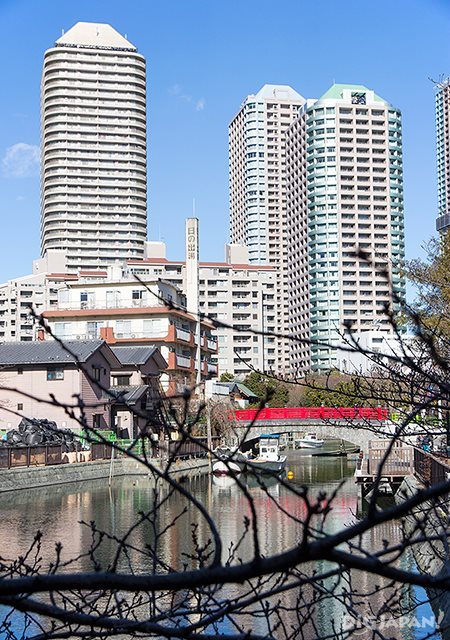
In more recent years it has become a land of high rises, but many old buildings and shops can still be found tucked away in the back alleys. This creates a beautiful contrast between old and new, attracting visitors daily.

Today Tsukishima is mainly known for monjayaki, also called monja, a Tokyo specialty which consists of various combinations of ingredients mixed with a runny batter and fried on a flat grill. A great number of monja restaurants are concentrated in Nishi-Nakadori Street in Tsukishima.
If you're planning to give monja a shot, why not spend a day exploring everything this man-made island has to offer? Here is a list of things that you don't want to miss on your day in Tsukishima!
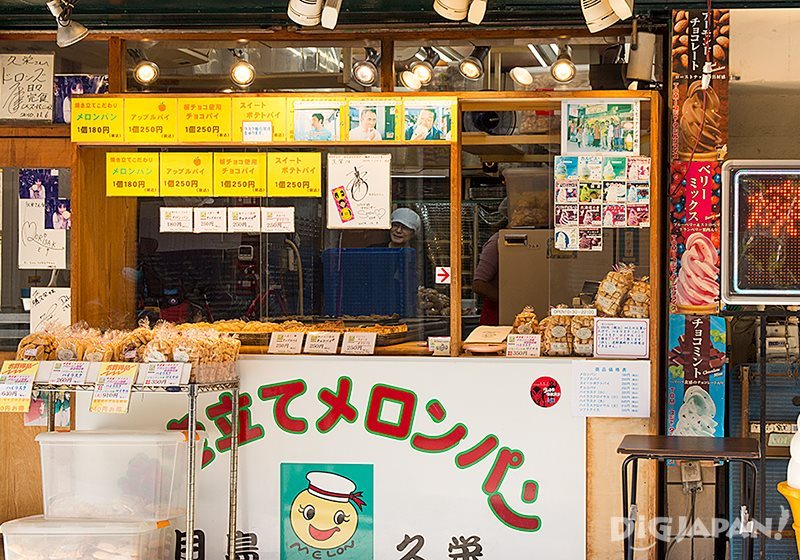
Get out at exit number 7 of Tsukishima Station on the Tokyo Metro Yurakucho Line or the Toei Oedo Line. Walk for about five minutes along Nishi-Nakadori Street. If you come in the morning when most of the monja restaurants are still closed, this shop will be hard to miss. You'll be attracted by the fragrant smell of bread and by the funny jingle that they always play. This tiny bakery specializes in melon pan (lit. melon bread). This a popular sweet gets its name from its apperance rather than its taste; its supposed to look like a the rind of a melon, though maybe it might look more like the shell of a turtle to some.
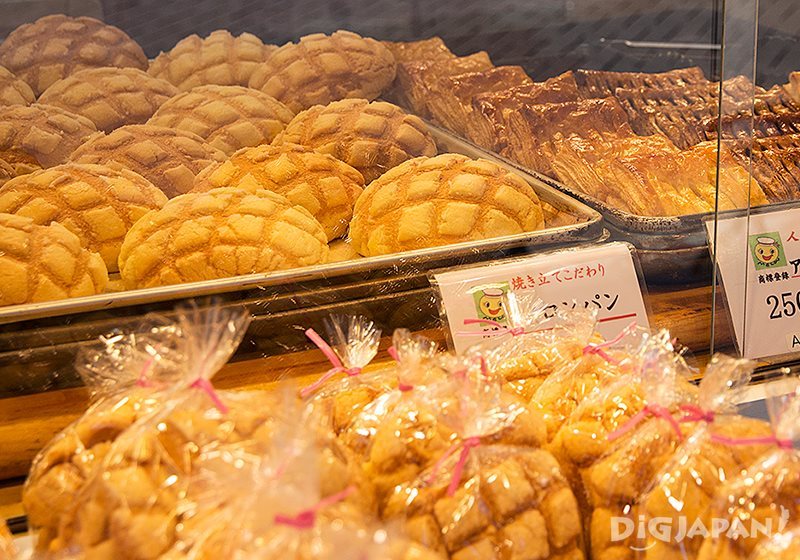
The locals love Kyuei's Melon Pan because it's crispy on the outside and soft on the inside. The shop also makes excellent apple pies, sweet potato pies and chocolate pies.
Hours: 10:30am - 10:00pm
Address: 1-21-3 Tsukishima, Chuo-ku, Tokyo (Open Map)
Once you have your freshly baked Melon Pan you can go back towards the station, walk past it and head towards the Tsukuda area. This used to be a nearby island, Tsukudajima, that was later merged with Tsukishima. Many of the oldest buildings can be found in this area.
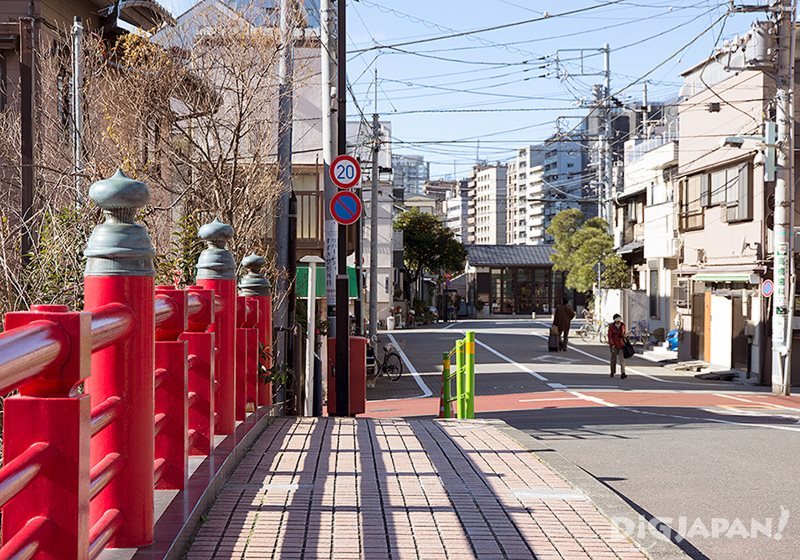
The bright red Tsukudako Bridge marks the entrance to Tsukuda.

Some of the scenery makes it really hard to believe that you're still in Tokyo.
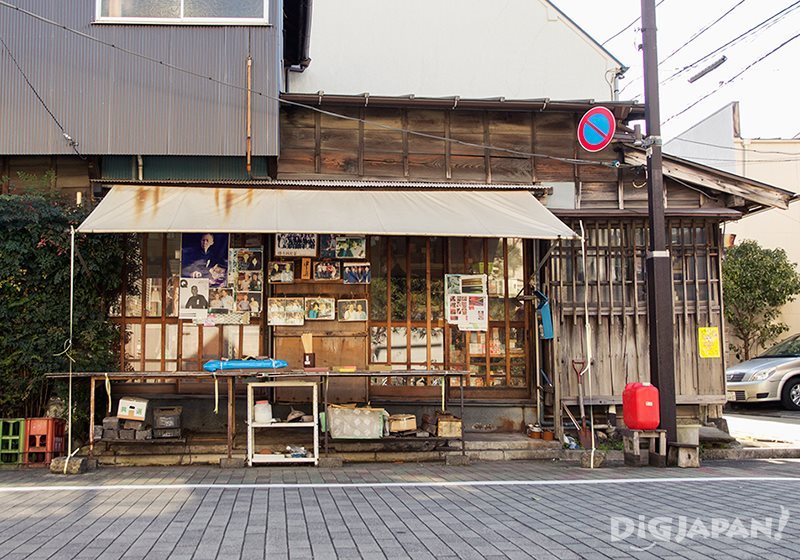
You will find many long standing shops such as this lacquerware house, which is about 300 years old.
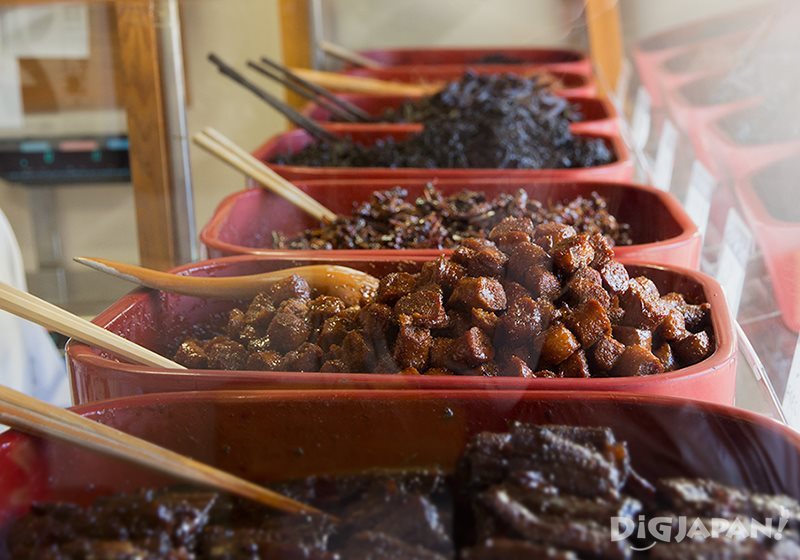
Tsukudajima is famous for tsukudani (佃煮), small pieces of food that are preserved by cooking it in a sweet sauce. Fish and seaweed are the most common ingredients made into tsukudani, which is used as a topping for rice. There are several tsukudani shops in this area.
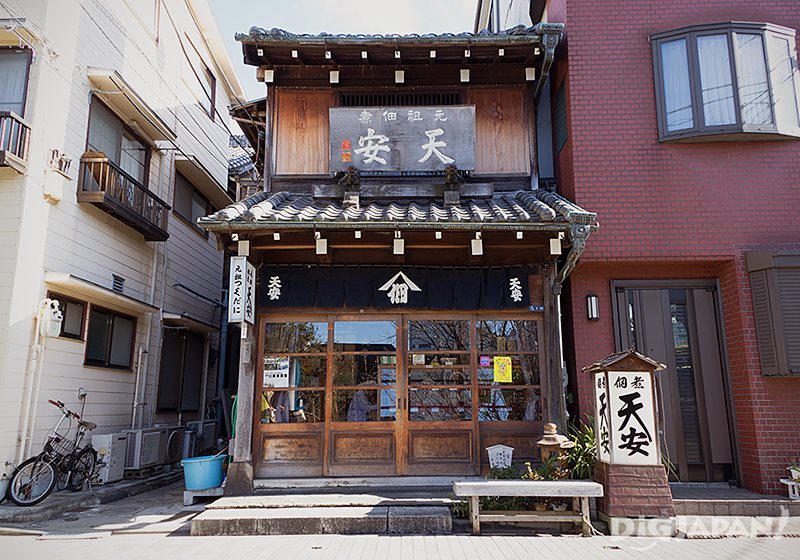
Tenyasu is the oldest tsukudani shop in Tsukudajima. Originated in 1837, it has been using the same tsukudani recipe for 180 years. Stop by for a true taste of the Edo period!

Tenyasu's best-selling tsukudani are konbu seaweed, asari (clams) and shirasu (baby sardines).
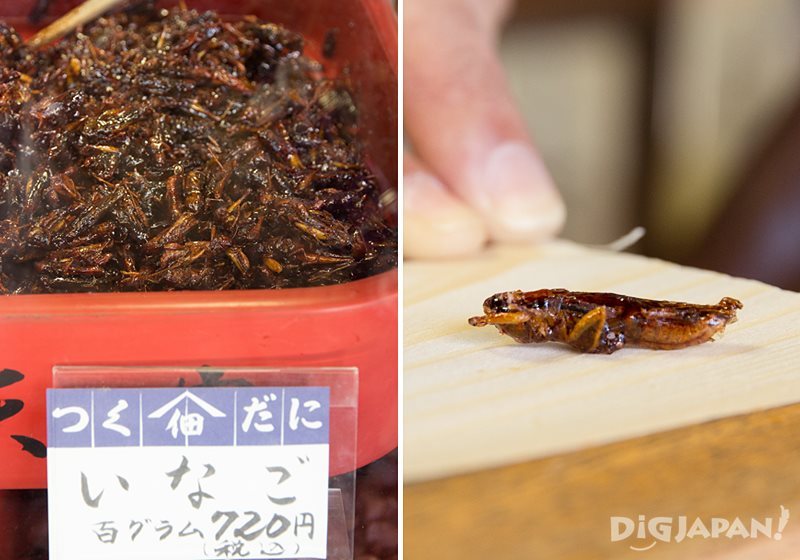
They also have inago (grasshopper) tsukudani!
Hours: 9:00am - 6:00pm
Address: 1-3-14 Tsukuda, Chuo-ku, Tokyo (Open Map)
Website (Japanese-only): http://www.tenyasu.jp/
Not far from Tenyasu is Sumiyoshi Shrine, a shrine dedicated to Sumiyoshi Daijin which are the gods of the sea and sailing.

A stone torii gate stands at the entrance, and you can see the main building straight ahead.
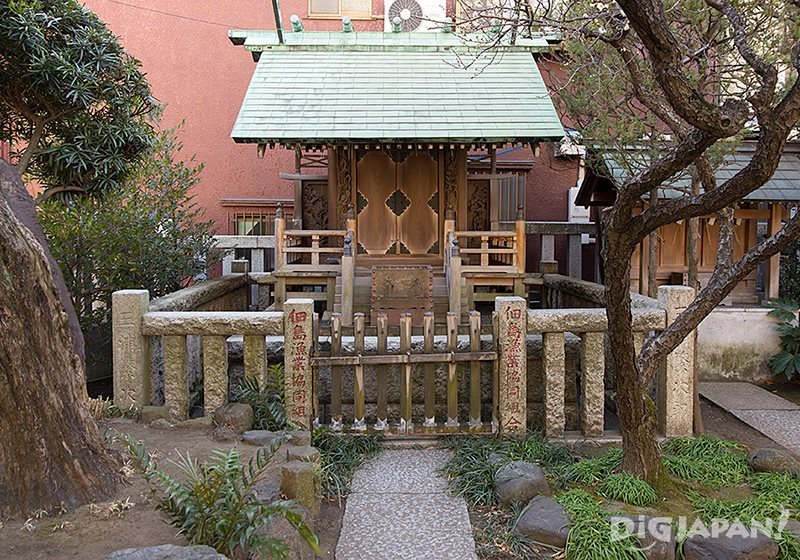
There are several small shrines where you can pray for the different gods. The one above for example, is dedicated to the goddess of ships and boats Funadama.
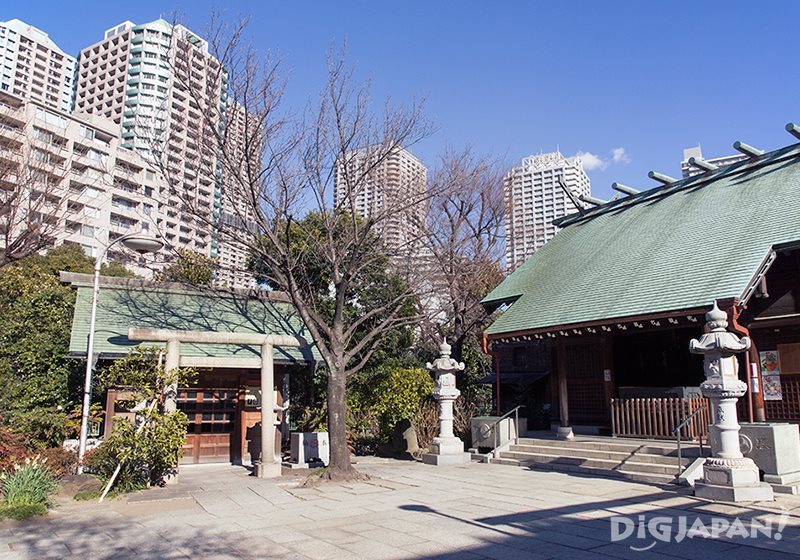
The temple grounds are outlined by high rises creating a stunning view. Japanese people are quite used to the coexistence of ancient and new, but many foreign travelers are fascinated by it.
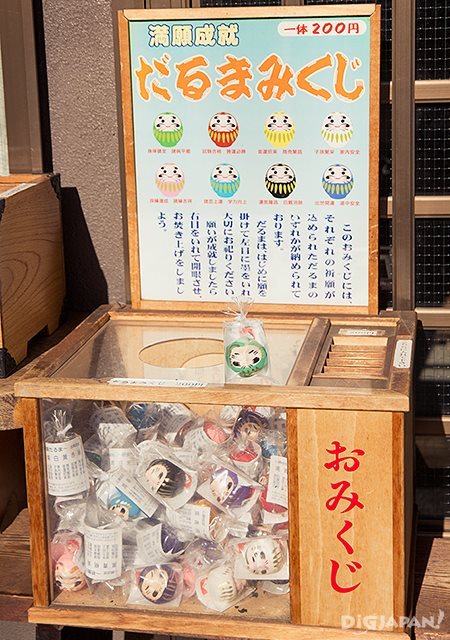
Omikuji are papers on which fortunes are written. The omikuji at Sumiyoshi Shrine come with a daruma doll and are called daruma mikuji. The colors represent different aspects of your life; I got green, which represents health.
Address: 1-1-14 Tsukuda, Chuo-ku, Tokyo (Open Map)
Website (Japanese-only): http://www.sumiyoshijinja.or.jp/
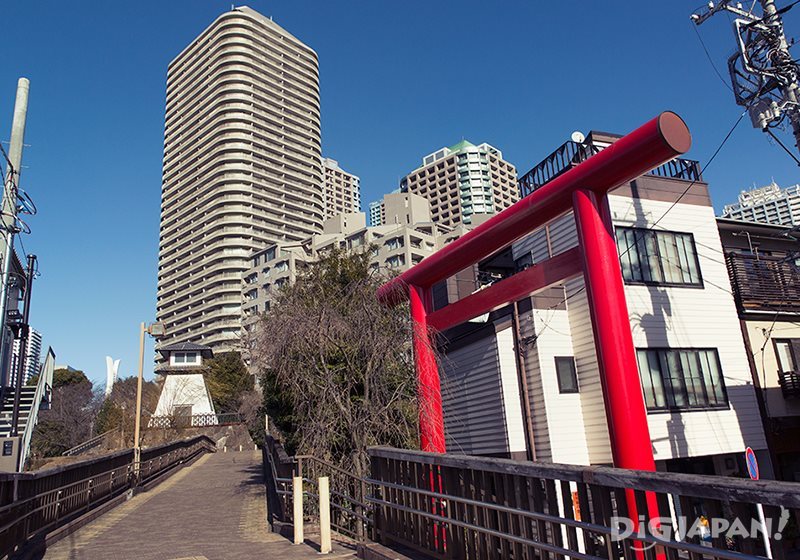
Right across the entrance to Sumiyoshi Shrine, a red torii gate will lead you to the Sumida riverside. You can start the walk here. With the gate behind you, turn right and you will get to the riverside.
Address:
1-1-18 Tsukuda, Chuo, Tokyo (Open Map)
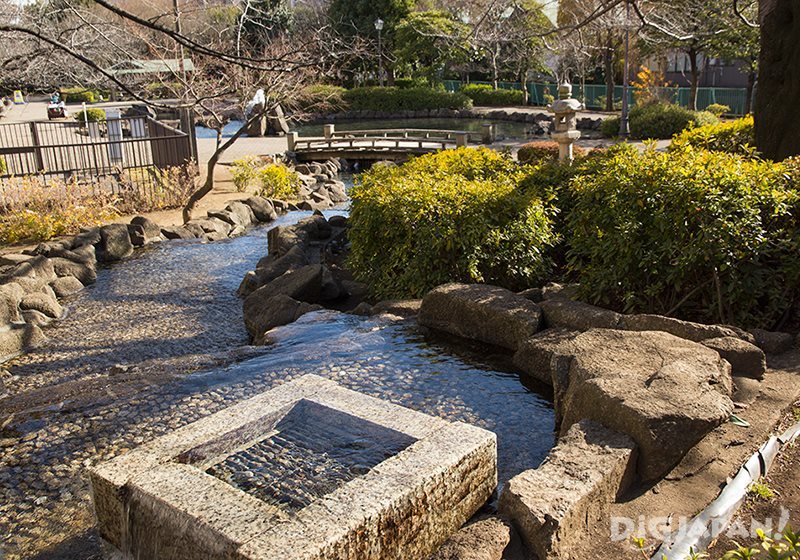
Before you get to the riverside, you will find a small Japanese style park where you can relax and take some pictures.
Address: 1-11-4 Tsukuda, Chuo-ku, Tokyo (Open Map)
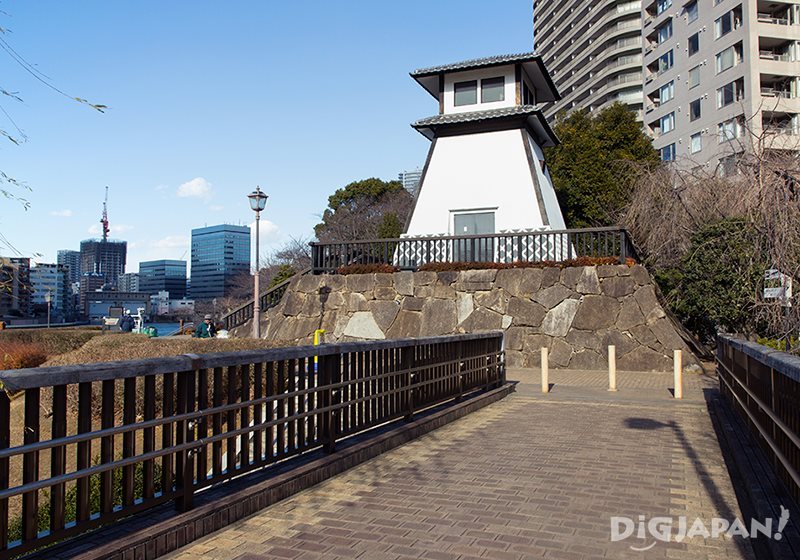
There is also a lighthouse by the park.
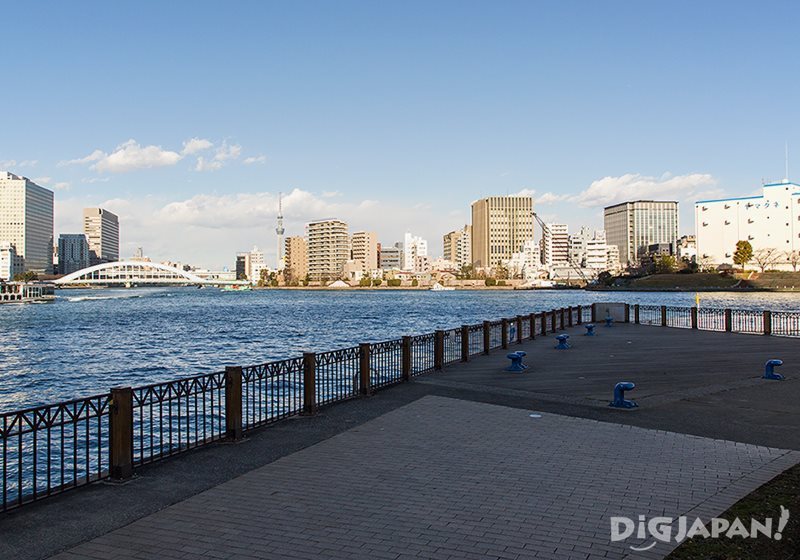
Once you get to the riverbank you can enjoy the city view, complete with Tokyo Skytree in the background. This walk is full of green and lined with benches, perfect for watching the scenery or pausing for a drink and a snack.
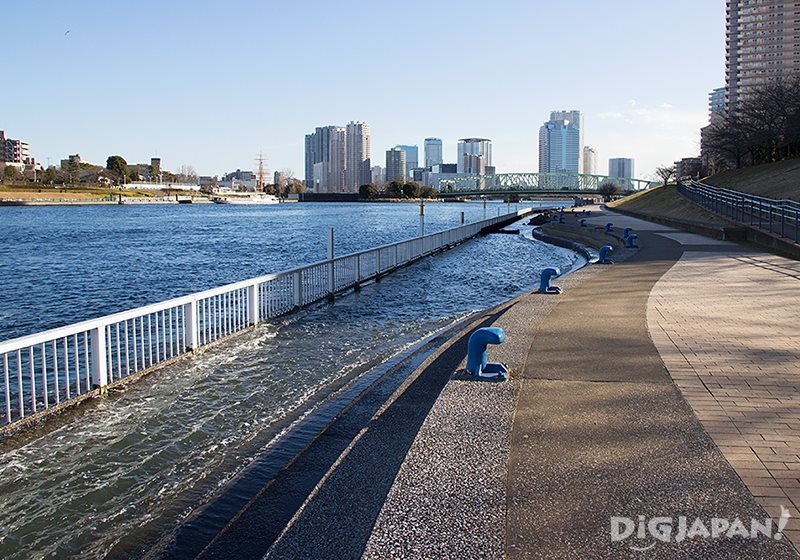
This spot is a favorite among local joggers and workers on their lunch break. Relax by the water while you get an insight of a more slow-paced everyday life in Tokyo.
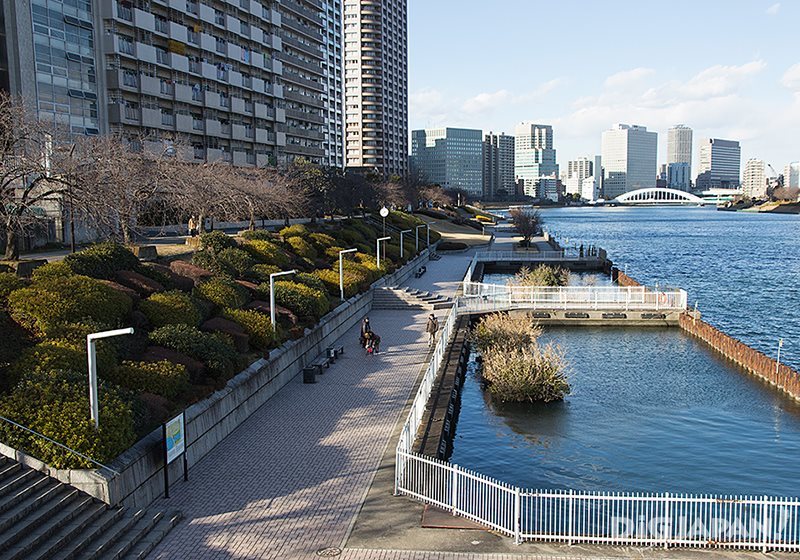
If you keep walking, you'll pass the edge of the island and arrive at the main road, Kiyosumi-dori, which takes you right back to Tsukishima Station.
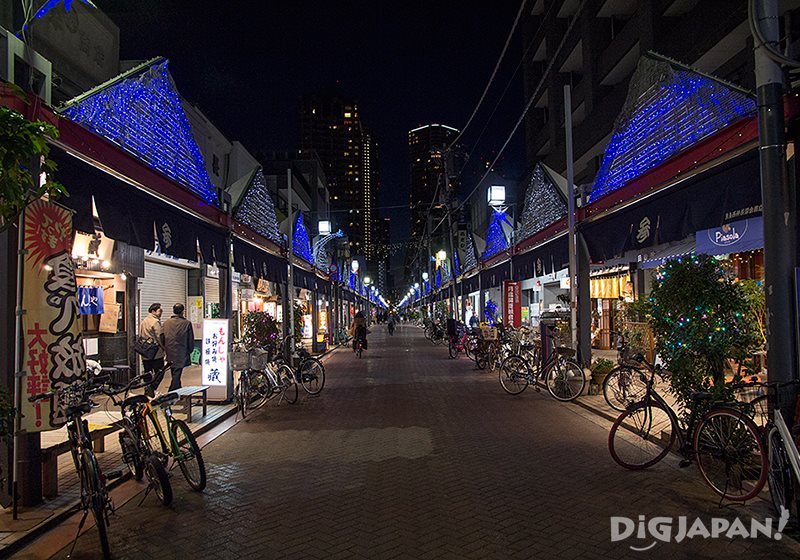
You have enjoyed a sweet treat, explored the old buildings, prayed to some gods and went for a walk. Now it's finally time to enjoy Tsukishima's main attraction: monja! Head back to Nishi-Nakadori Street, where more than 50 monja restaurants are waiting for you.
The best time to go for a monja is past 5:00pm, since most of the restaurants aren't open before that time, especially on weekdays.
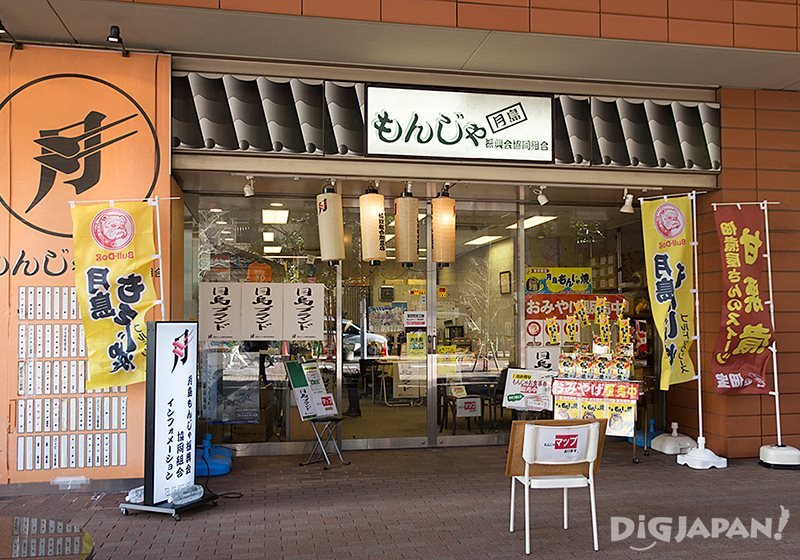
If you want to grab a free map of the restaurants and maybe some souvenirs, you can stop at the Tsukishima Monja Association Information Center. It's located right at the entrance of Nishi-Nakadori Street.
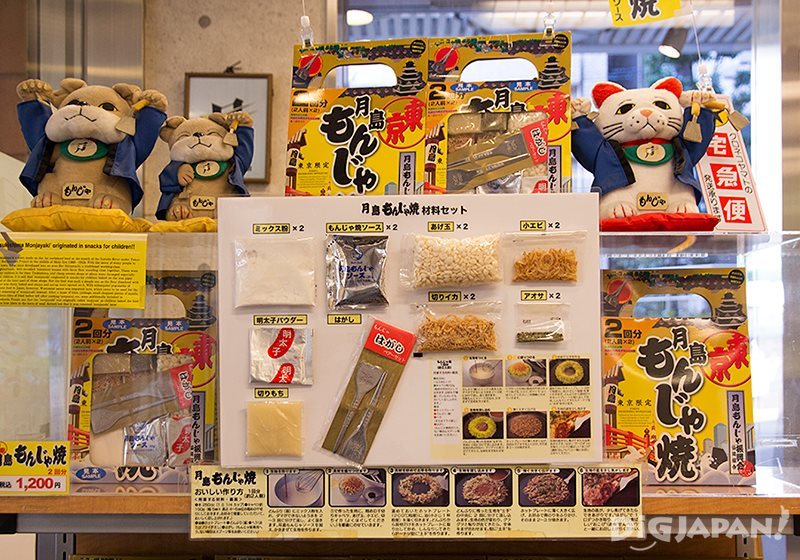
The most popular Tsukishima souvenir is the monja kit, which contains all the necessary ingredients and instructions to make your own monja at home! If cooking is not your thing, you can grab a pack of monja senbei, monja flavored rice crackers.
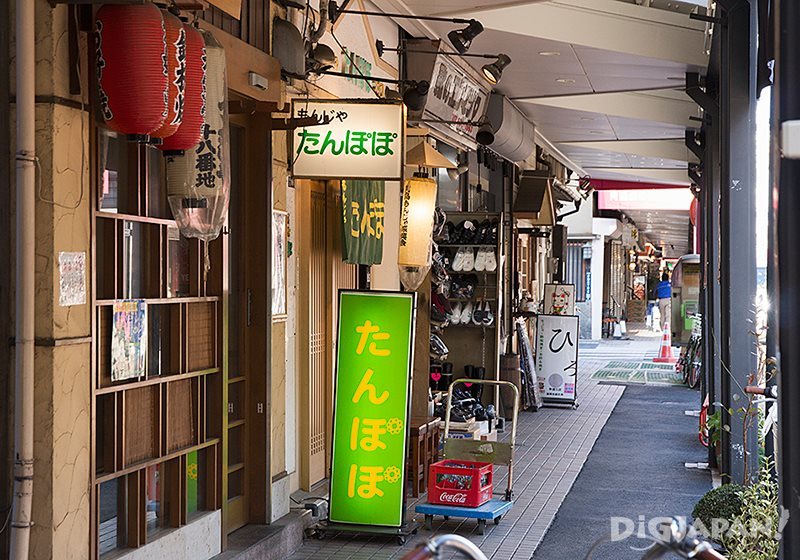
Now that you have your souvenirs, your guide, and you're hungry from all the walking, it's time to fill your stomach! Just choose a restaurant on the main street or in one of the side alleys; it's hard to go wrong.
Monja is cooked on a flat iron grill called a teppan by the clients at their table. In most restaurants the staff will make it for you if you ask them to, but we recommend that you try to make it yourself at least once; it will surely taste better!
1. Choose your favorite topping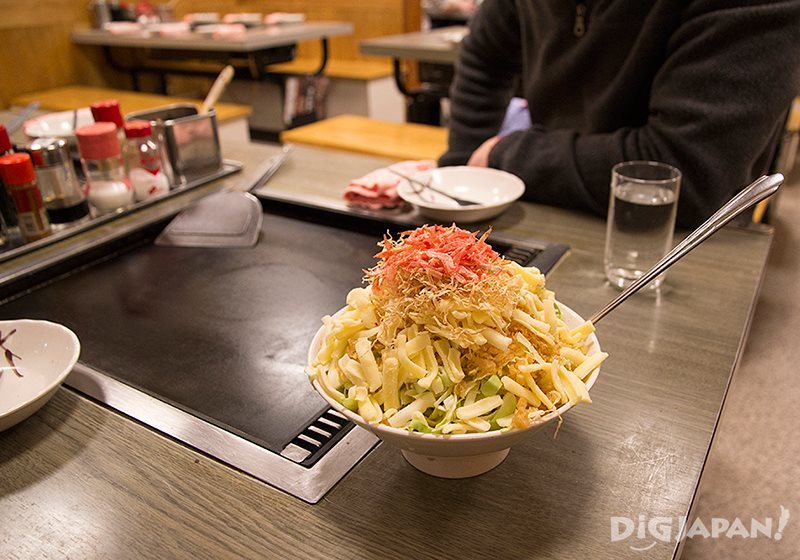
The base batter for monja is always the same, and you get to choose the toppings you'd like. Popular toppings include cheese, pork, curry, shrimp, fish, and mentaiko (Alaska pollock roe).
2. Oil the grill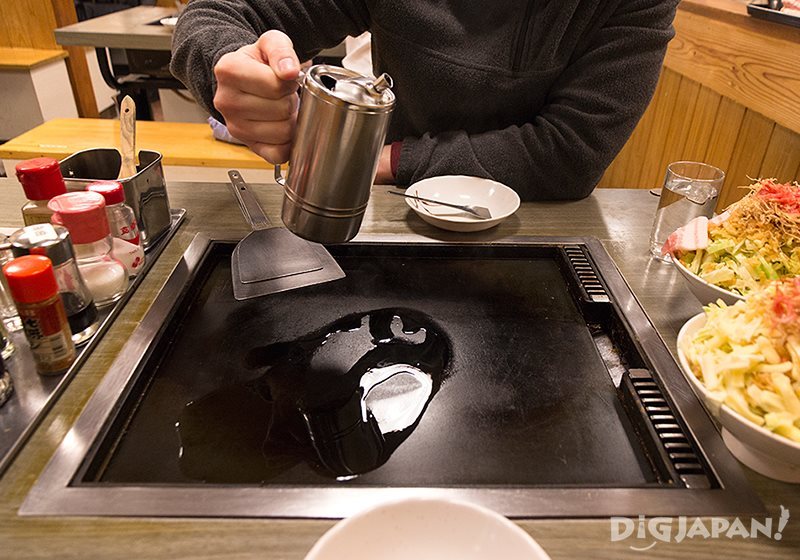
Try with just a drop first; if it sizzles, the grill is ready. Pour some oil on the teppan and spread it using the big spatula.
3. Add the solid ingredients
Scoop the solid ingredients from the bowl and put them on the pan, leaving the liquid batter in the bowl.
4. Chop!
Using the two big spatulas, chop the cabbage and the other ingredients and let them cook on the grill until the cabbage starts becoming soft.
5. Make a donut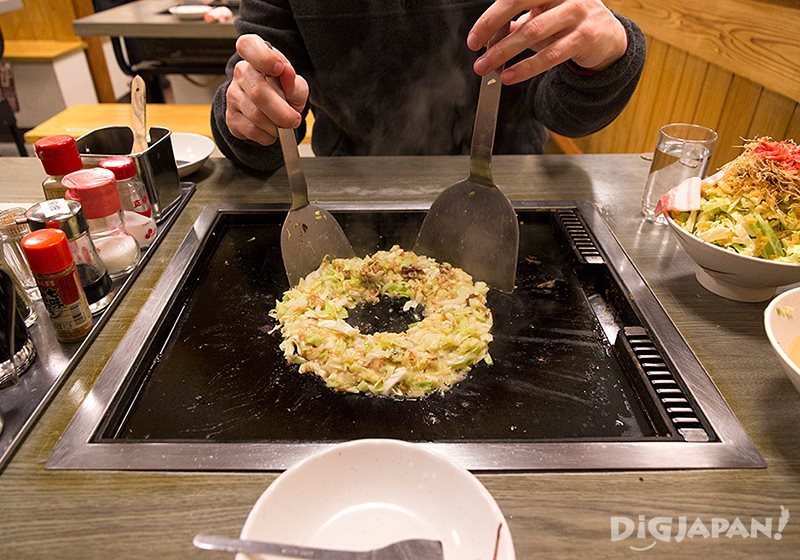
Now form a donut shape with the ingredients at the center of the grill. This is the most important part: make it even and the batter won't overflow.
6. Pour the batter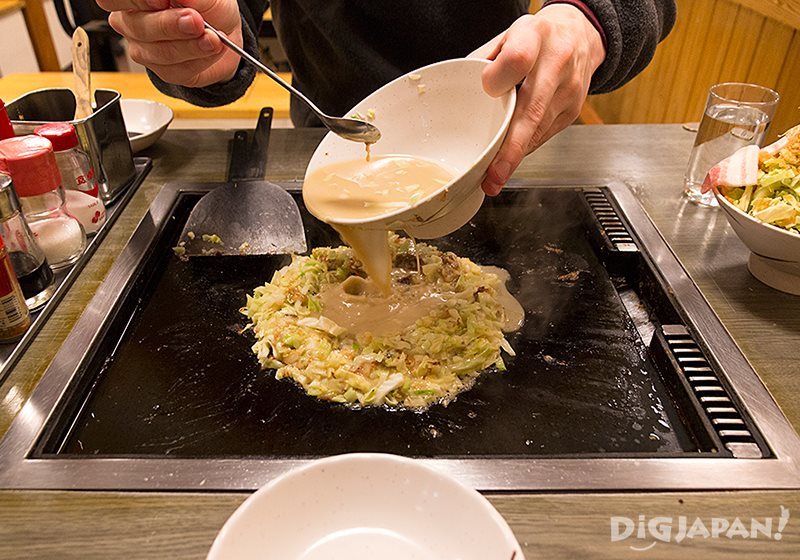
Slowly and carefully pour the batter left in the bowl in the center of your donut.
7. Mix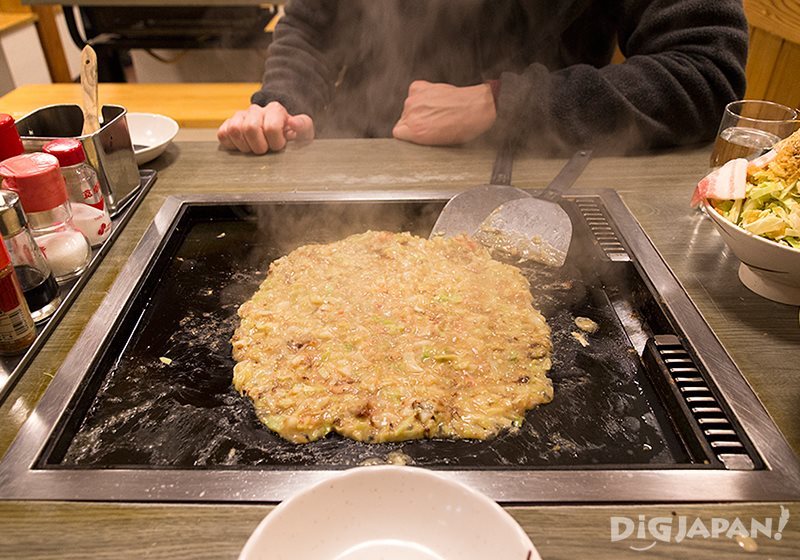
The batter will start thickening almost instantly. Mix it with the ingredients and spread your monja evenly on the pan.
8. Seasoning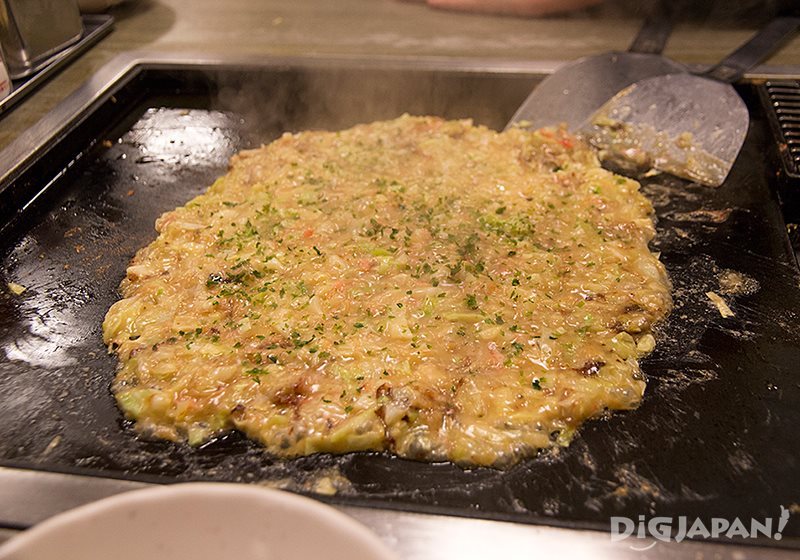
If you like, sprinkle some dried aonori seaweed on top.
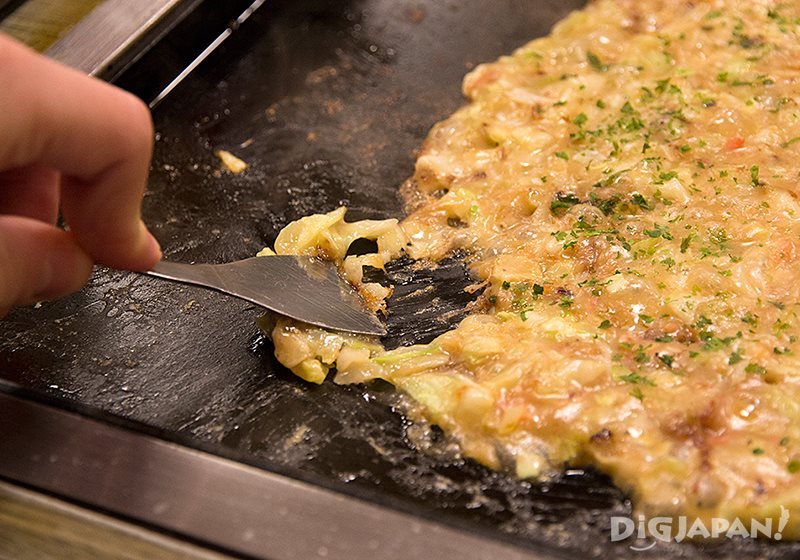
When the bottom of the monja gets a little scorched you can start eating. The texture of monja is supposed to be looser than that of okonomiyaki, the texture of which is closer to a pancake-like consistency. Use the little spatula to take some monja and press it on the pan to burn it even more, then eat it with the spatula.
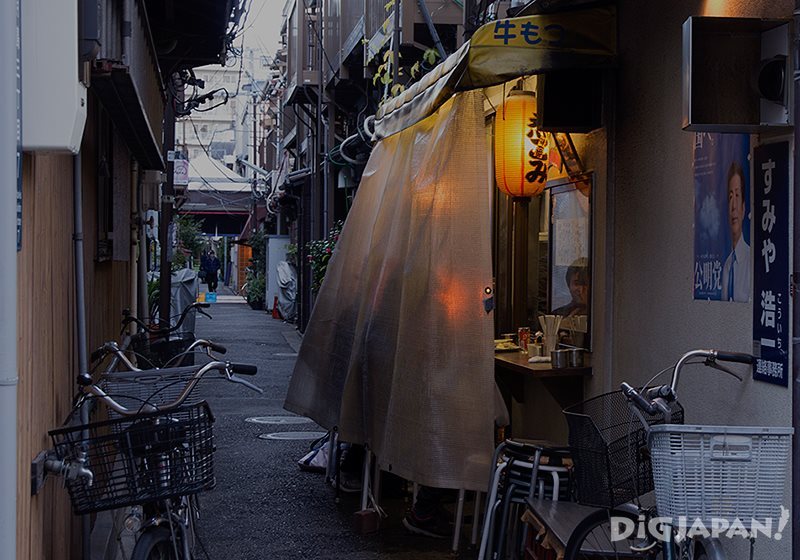
If you're still able to walk after all that monja, we recommend exploring Nishi-Nakadori Street and its back alleys; some old izakayas with a nostalgic Showa Era feel can be found in the area.
So this is your day plan: Nishi-Nakadori Street with monja restaurants and back alleys to explore; the Tsukuda area with tsukudani shops and old buildings; the Sumida River Terrace, a refreshing and relaxing walk with a beautiful view.
Now you know the secrets of Tsukishima!
About the author
Laura is an Italian living and working in Tokyo. She loves exploring hidden and unknown places, taking pictures and listening to Punk Rock music. When she’s not busy doing the above, she might enjoy a craft beer or play the sanshin (an Okinawan instrument similar to a shamisen).
Over 100 years ago, a shipping channel was created in Tokyo bay and the earth that was dredged during the constructions was used to create Tsukishima.
Completed in 1892, this man made island was originally designated by the government as an iron-working area.

In more recent years it has become a land of high rises, but many old buildings and shops can still be found tucked away in the back alleys. This creates a beautiful contrast between old and new, attracting visitors daily.

Nishi-Nakadori Street.
Today Tsukishima is mainly known for monjayaki, also called monja, a Tokyo specialty which consists of various combinations of ingredients mixed with a runny batter and fried on a flat grill. A great number of monja restaurants are concentrated in Nishi-Nakadori Street in Tsukishima.
If you're planning to give monja a shot, why not spend a day exploring everything this man-made island has to offer? Here is a list of things that you don't want to miss on your day in Tsukishima!
Break Your Fast With a Freshly Baked Melon Pan

Get out at exit number 7 of Tsukishima Station on the Tokyo Metro Yurakucho Line or the Toei Oedo Line. Walk for about five minutes along Nishi-Nakadori Street. If you come in the morning when most of the monja restaurants are still closed, this shop will be hard to miss. You'll be attracted by the fragrant smell of bread and by the funny jingle that they always play. This tiny bakery specializes in melon pan (lit. melon bread). This a popular sweet gets its name from its apperance rather than its taste; its supposed to look like a the rind of a melon, though maybe it might look more like the shell of a turtle to some.

The locals love Kyuei's Melon Pan because it's crispy on the outside and soft on the inside. The shop also makes excellent apple pies, sweet potato pies and chocolate pies.
Information
Kyuei | 久栄Hours: 10:30am - 10:00pm
Address: 1-21-3 Tsukishima, Chuo-ku, Tokyo (Open Map)
Ready for a Trip into the Past?
Once you have your freshly baked Melon Pan you can go back towards the station, walk past it and head towards the Tsukuda area. This used to be a nearby island, Tsukudajima, that was later merged with Tsukishima. Many of the oldest buildings can be found in this area.

The bright red Tsukudako Bridge marks the entrance to Tsukuda.

Some of the scenery makes it really hard to believe that you're still in Tokyo.

You will find many long standing shops such as this lacquerware house, which is about 300 years old.
Savor the Tradition

Tsukudajima is famous for tsukudani (佃煮), small pieces of food that are preserved by cooking it in a sweet sauce. Fish and seaweed are the most common ingredients made into tsukudani, which is used as a topping for rice. There are several tsukudani shops in this area.

Tenyasu is the oldest tsukudani shop in Tsukudajima. Originated in 1837, it has been using the same tsukudani recipe for 180 years. Stop by for a true taste of the Edo period!

Tenyasu's best-selling tsukudani are konbu seaweed, asari (clams) and shirasu (baby sardines).

They also have inago (grasshopper) tsukudani!
Information
Tenyasu | 天安Hours: 9:00am - 6:00pm
Address: 1-3-14 Tsukuda, Chuo-ku, Tokyo (Open Map)
Website (Japanese-only): http://www.tenyasu.jp/
Pay a Visit to the Sea Gods
Not far from Tenyasu is Sumiyoshi Shrine, a shrine dedicated to Sumiyoshi Daijin which are the gods of the sea and sailing.

A stone torii gate stands at the entrance, and you can see the main building straight ahead.

There are several small shrines where you can pray for the different gods. The one above for example, is dedicated to the goddess of ships and boats Funadama.

The temple grounds are outlined by high rises creating a stunning view. Japanese people are quite used to the coexistence of ancient and new, but many foreign travelers are fascinated by it.

Omikuji are papers on which fortunes are written. The omikuji at Sumiyoshi Shrine come with a daruma doll and are called daruma mikuji. The colors represent different aspects of your life; I got green, which represents health.
Information
Sumiyoshi Shrine | 住吉神社Address: 1-1-14 Tsukuda, Chuo-ku, Tokyo (Open Map)
Website (Japanese-only): http://www.sumiyoshijinja.or.jp/
Walk the Sumida River Terrace

Right across the entrance to Sumiyoshi Shrine, a red torii gate will lead you to the Sumida riverside. You can start the walk here. With the gate behind you, turn right and you will get to the riverside.
Address:
1-1-18 Tsukuda, Chuo, Tokyo (Open Map)

Before you get to the riverside, you will find a small Japanese style park where you can relax and take some pictures.
Information
Tsukuda Park | 佃公園Address: 1-11-4 Tsukuda, Chuo-ku, Tokyo (Open Map)

There is also a lighthouse by the park.

Once you get to the riverbank you can enjoy the city view, complete with Tokyo Skytree in the background. This walk is full of green and lined with benches, perfect for watching the scenery or pausing for a drink and a snack.

This spot is a favorite among local joggers and workers on their lunch break. Relax by the water while you get an insight of a more slow-paced everyday life in Tokyo.

If you keep walking, you'll pass the edge of the island and arrive at the main road, Kiyosumi-dori, which takes you right back to Tsukishima Station.
It's Monja Time!

You have enjoyed a sweet treat, explored the old buildings, prayed to some gods and went for a walk. Now it's finally time to enjoy Tsukishima's main attraction: monja! Head back to Nishi-Nakadori Street, where more than 50 monja restaurants are waiting for you.
The best time to go for a monja is past 5:00pm, since most of the restaurants aren't open before that time, especially on weekdays.

If you want to grab a free map of the restaurants and maybe some souvenirs, you can stop at the Tsukishima Monja Association Information Center. It's located right at the entrance of Nishi-Nakadori Street.

The most popular Tsukishima souvenir is the monja kit, which contains all the necessary ingredients and instructions to make your own monja at home! If cooking is not your thing, you can grab a pack of monja senbei, monja flavored rice crackers.

Now that you have your souvenirs, your guide, and you're hungry from all the walking, it's time to fill your stomach! Just choose a restaurant on the main street or in one of the side alleys; it's hard to go wrong.
Information
Tsukishima Monja Association | 月島もんじゃ振興会協同組合
Address: 1-8-1 Tsukishima, Chuo-ku, Tokyo (Open Map)
Hours: 12:00pm~8:00pm
Extra: How to Make Monja
Monja is cooked on a flat iron grill called a teppan by the clients at their table. In most restaurants the staff will make it for you if you ask them to, but we recommend that you try to make it yourself at least once; it will surely taste better!
1. Choose your favorite topping

The base batter for monja is always the same, and you get to choose the toppings you'd like. Popular toppings include cheese, pork, curry, shrimp, fish, and mentaiko (Alaska pollock roe).
2. Oil the grill

Try with just a drop first; if it sizzles, the grill is ready. Pour some oil on the teppan and spread it using the big spatula.
3. Add the solid ingredients

Scoop the solid ingredients from the bowl and put them on the pan, leaving the liquid batter in the bowl.
4. Chop!

Using the two big spatulas, chop the cabbage and the other ingredients and let them cook on the grill until the cabbage starts becoming soft.
5. Make a donut

Now form a donut shape with the ingredients at the center of the grill. This is the most important part: make it even and the batter won't overflow.
6. Pour the batter

Slowly and carefully pour the batter left in the bowl in the center of your donut.
7. Mix

The batter will start thickening almost instantly. Mix it with the ingredients and spread your monja evenly on the pan.
8. Seasoning

If you like, sprinkle some dried aonori seaweed on top.

When the bottom of the monja gets a little scorched you can start eating. The texture of monja is supposed to be looser than that of okonomiyaki, the texture of which is closer to a pancake-like consistency. Use the little spatula to take some monja and press it on the pan to burn it even more, then eat it with the spatula.
End the Night with a Drink in the Back Alleys

If you're still able to walk after all that monja, we recommend exploring Nishi-Nakadori Street and its back alleys; some old izakayas with a nostalgic Showa Era feel can be found in the area.
So this is your day plan: Nishi-Nakadori Street with monja restaurants and back alleys to explore; the Tsukuda area with tsukudani shops and old buildings; the Sumida River Terrace, a refreshing and relaxing walk with a beautiful view.
Now you know the secrets of Tsukishima!
About the author
Laura is an Italian living and working in Tokyo. She loves exploring hidden and unknown places, taking pictures and listening to Punk Rock music. When she’s not busy doing the above, she might enjoy a craft beer or play the sanshin (an Okinawan instrument similar to a shamisen).

Liked this story? Like DiGJAPAN!
on Facebook for daily updates!
THIS ARTICLE IS BASED ON INFORMATION FROM 03 03,2017 Author:DiGJAPAN! Editorial Team













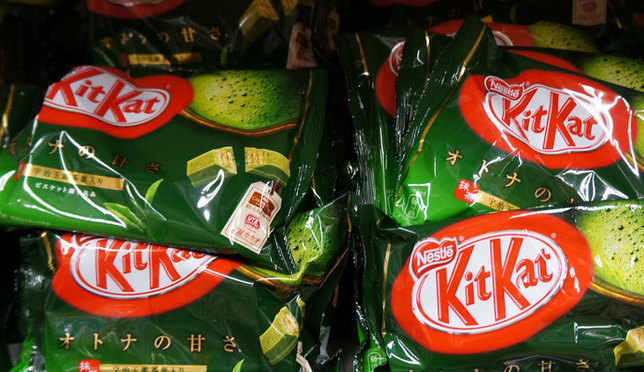
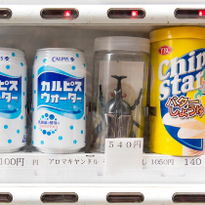

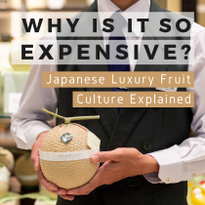





NEW COMMENT | 0 COMMENTS
Open a DiGJAPAN!
account to comment.
Open a DiGJAPAN! Account